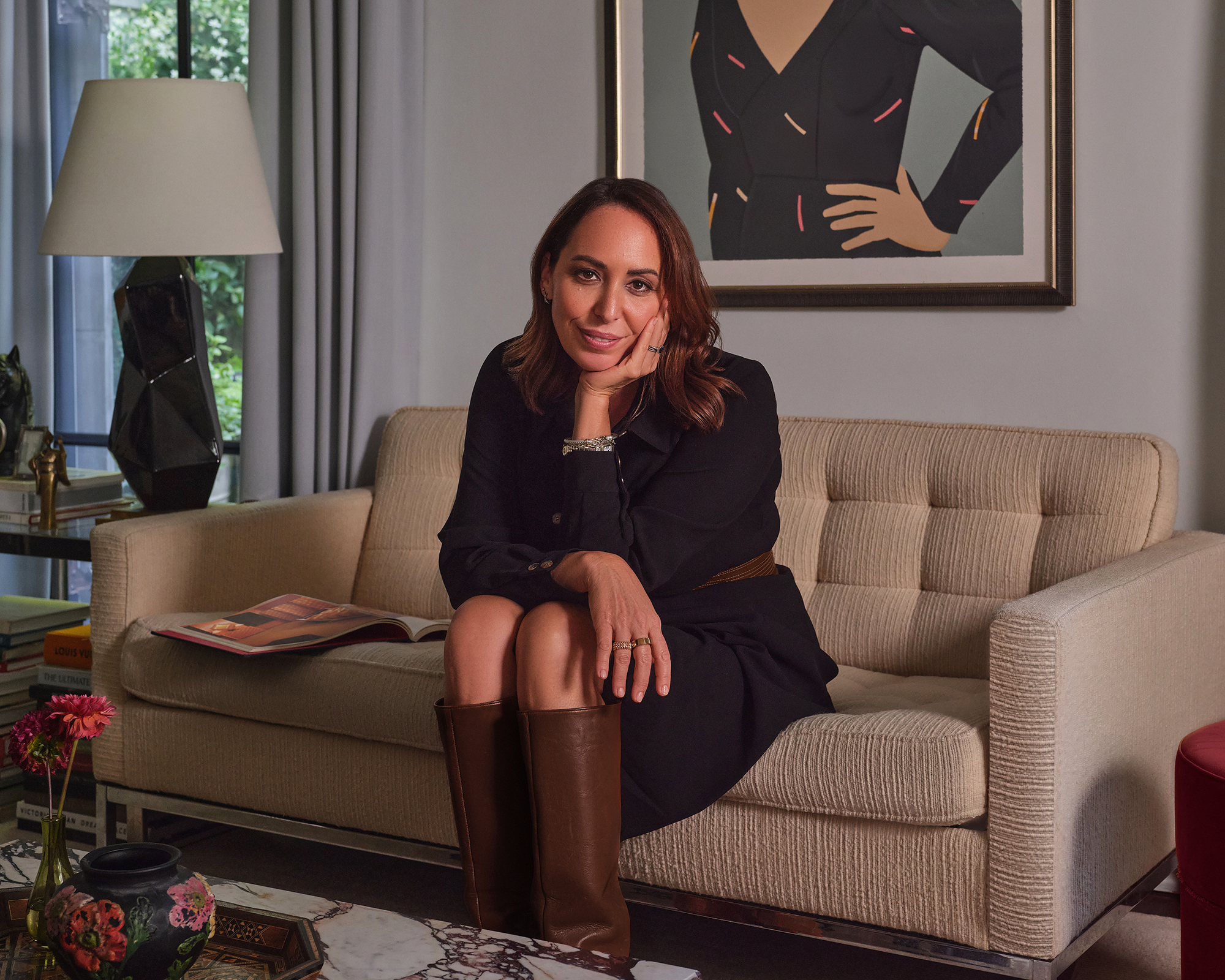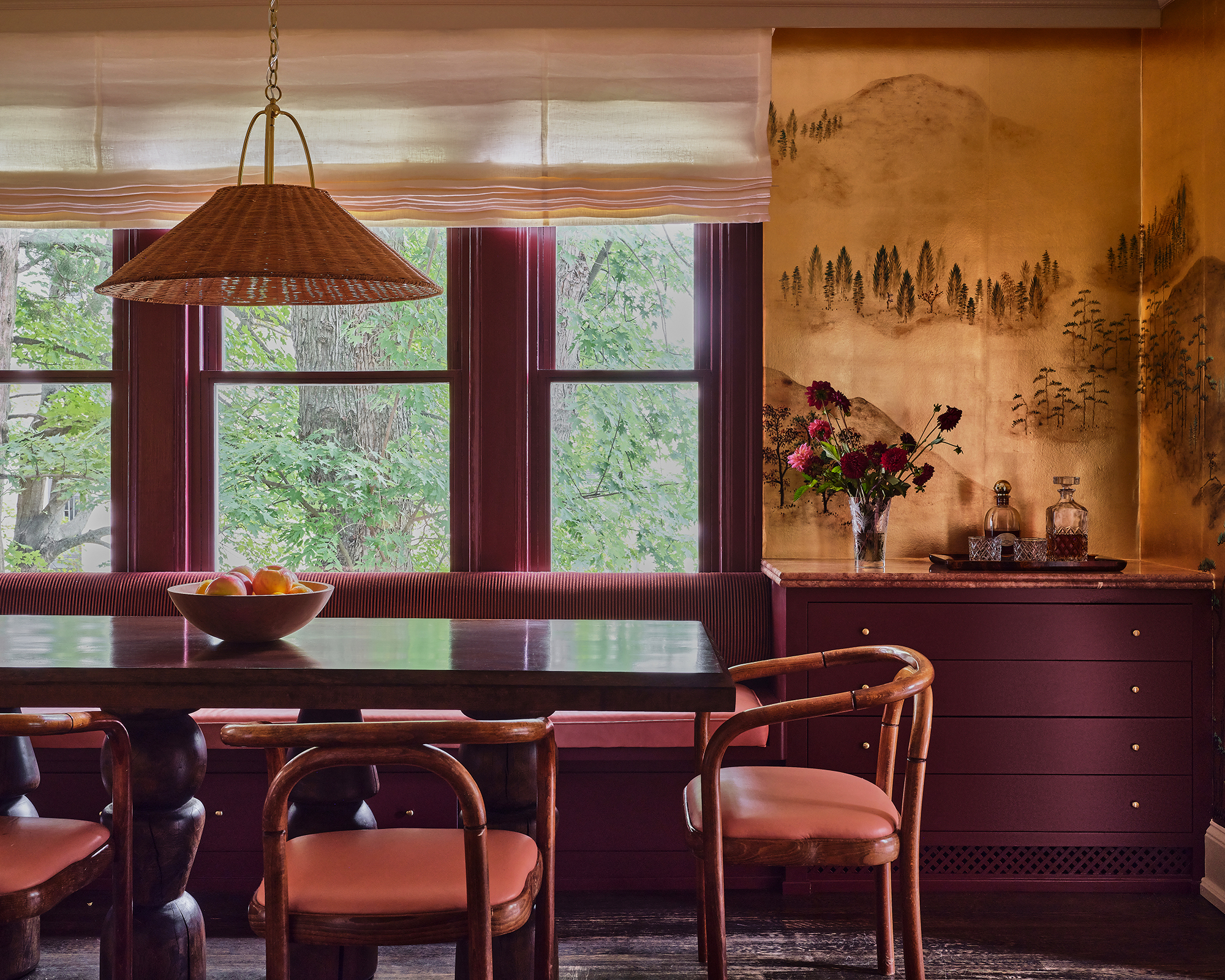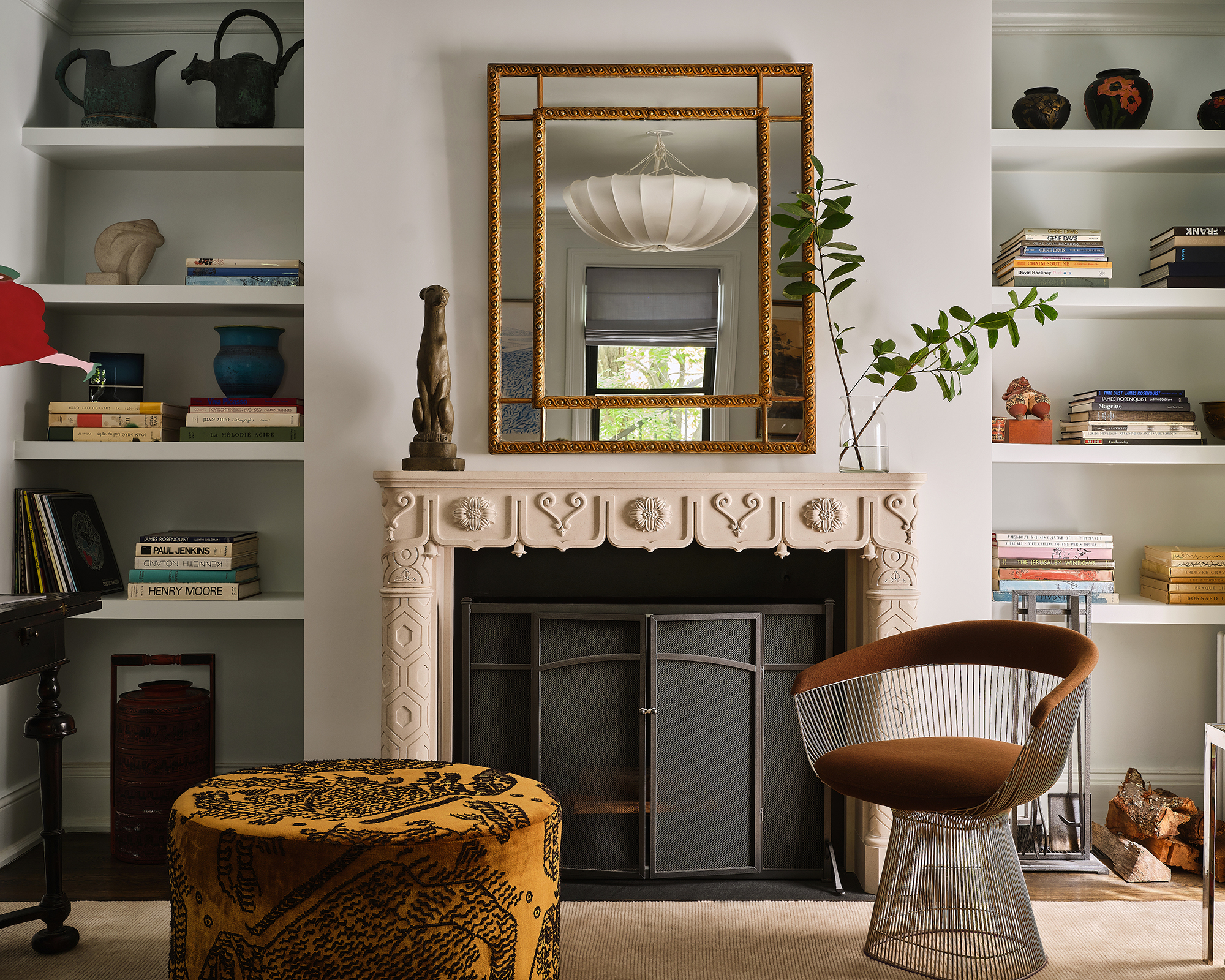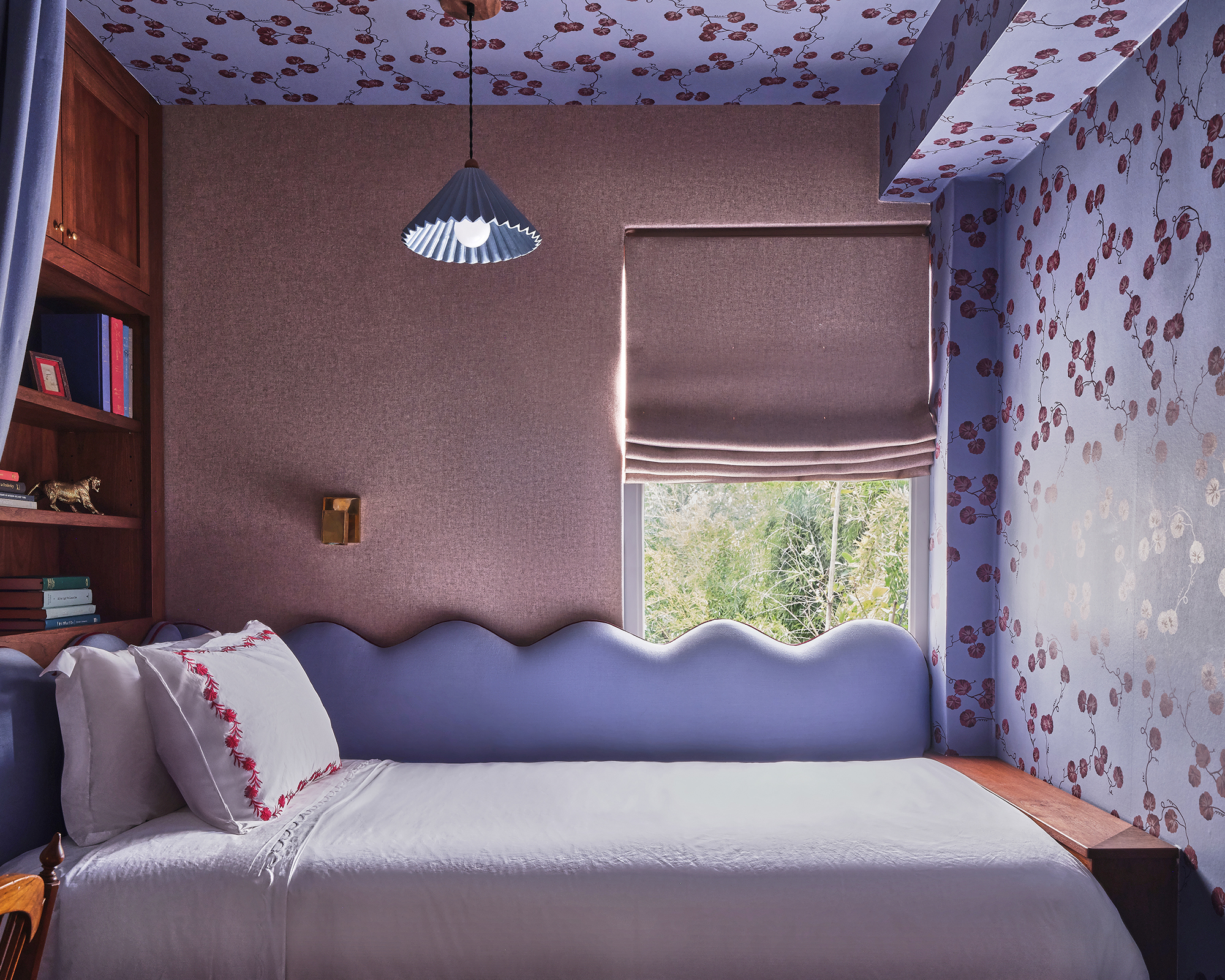'People aren’t afraid of color, they just don’t know how to use it' – designer Zoe Feldman on creating rooms full of warmth and soul
Zoe Feldman reveals how thoughtful color palettes and layered textures can transform even the starkest new build into a warm, character-filled home

Zoe Feldman has built a reputation as one of America’s most soulful and intentional interior designers, known for creating homes that are warm, characterful, and deeply personal. Based in Washington, D.C., Zoe trained at Parsons School of Design before establishing her eponymous studio. Her interior design style is rooted in an understanding of architecture first, ensuring that the bones of a building set the tone for what follows.
From there, she layers in bold color, rich textures, and carefully chosen art, weaving together spaces that feel collected, expressive, and alive with personality. In this conversation, Zoe shares her thoughts on how to bring soul to even the most sterile new builds, the role of art and color in shaping mood, and how to make a home feel like a true reflection of its owners.

Your rooms always feel soulful and intentional – what’s the first thing you look for when walking into a space that needs reimagining?
The first thing I consider is the building itself – what it offers, what the bones are like, and whether it needs added warmth or soul. I design as the person I am: naturally warm, casual, and approachable. My spaces reflect that same spirit.
How do you add that soul or warmth into a space that doesn’t have much, or any?
In America, there are far more new builds than historic homes, and we often encounter modern houses that feel rushed and lack soul. They might have soaring ceilings, but with open-concept layouts, not every area has defined walls.
My focus is on making those spaces feel cozy – framing areas to give them distinction and purpose. We add moldings and sometimes lower the ceilings slightly. I want people to feel ensconced, with each area serving its intended function. If it’s a dining room, for example, it should feel like a dedicated dining space, thoughtfully designed for that experience.
Design expertise in your inbox – from inspiring decorating ideas and beautiful celebrity homes to practical gardening advice and shopping round-ups.

You’ve spoken about homes being a form of self-expression. How do you guide clients toward discovering and articulating their personal style?
The great thing is that people drawn to my style usually crave personality in their homes – if they wanted something sterile, they wouldn’t hire me. My first step is simply getting to know the client. Do they have collections? That’s always a good starting point – vases, records, art books, or souvenirs from their travels. We want to highlight the things they love, not hide them.
In today’s digital world, the more analogue objects you surround yourself with, the more conversational your home becomes. Visitors browse your music, your books, your art, and those pieces spark dialogue. Maybe they see a record they love, a book they’ve always wanted to read, or a shared interest like jazz – it invites connection. Being surrounded by objects you cherish creates wonder and warmth. Sitting in a living room filled with carefully collected pieces is like being enveloped in a tapestry of your life.
Talking of tapestries, you put colors together in such a rich and fearless way – deep eggplant, petrol blues, dusty pinks. What’s your process for building a palette that feels both bold and livable?
I think of color as immersive, and I’ve always been influenced by the artist Mark Rothko, who used bold shades to evoke emotion. We need to stop being afraid of color – our lives are full of it! If blue calms you, it belongs in your bedroom. If pink makes you happy, why not use it in a sitting room? And if green connects you to the outdoors, that’s perfect for a kitchen where you start your day.
For those who are a little more nervous about color, do you take a subtler approach?
Absolutely. For more cautious clients, I might reserve bold colors for upholstery or artwork. Often, they prefer white walls, and we find ways to introduce color at the heart of the space. Even those 'white-wall' clients usually want their dens to feel cozy, which is where I’ll drench in color.
Or in rooms like a dining room, where they want a moody, grown-up vibe, or a powder room, which is experienced only briefly – you can go really bold in these moments without overwhelming the home. It’s all about finding the right balance between statement and livability.

Texture seems to play a quiet but powerful role in your work – from soft boucle chairs to aged leathers and natural woods. What are your favorite material pairings right now?
I’m still obsessed with mohair rugs – they’re soft, comfortable, and perfect for sitting on the floor. Lately, I’ve also been loving cashmere, which I recently used on a sofa. It’s indulgent and luxurious, especially in a buttery camel tone. Combining these textures brings warmth and tactile richness to a room without feeling overdone.
But surely cashmere isn’t very practical for a couch?
No, it’s definitely not practical! I wouldn’t use it in my own home – I have a seven-year-old, a nine-year-old, a dog, and two cats. This sofa, however, was for a couple of empty nesters, so it made sense. As for other materials I love, lightweight wool for drapes is a favorite. It catches the light beautifully, giving a subtle flicker, and it works wonderfully year-round – not too heavy for summer, yet not too light for winter.
You mentioned art earlier as a way to bring color in. Do you start with key pieces and design around them, or curate as the space comes together?
I come from an art background – a family of art dealers – so I’ve been fortunate to acquire pieces over time. I love how art transforms a space; moving a piece can make it feel entirely new. Sometimes we do build a room around a particular work, though I don’t aim to match the art to the space. I like to be thoughtful about how it responds to the room. I enjoy playing with scale as well. An oversized piece can feel dramatic over a sofa or bed, while a small, dainty piece works perfectly in a powder room or hallway, inviting you to approach and take a closer look. Each choice is about creating a sense of discovery and engagement within the home.
What do you think about when sourcing art?
I wish more people embraced art and felt less intimidated by contemporary work. Art is so often misunderstood. You can create a beautiful space, but without art, it can feel flat. It doesn’t need to be expensive – you can find treasures at flea markets or support emerging artists. The key is to buy what you love and let it speak to you. That same advice applies to color, too. People aren’t truly afraid of it – they just don’t always know how to use it.
See more of Zoe Feldman's work at Zoe Feldman Design
Pip Rich is an interiors journalist and editor with 20 years' experience, having written for all of the UK's biggest titles. Most recently, he was the Global Editor in Chief of our sister brand, Livingetc, where he now continues in a consulting role as Executive Editor. Before that, he was acting editor of Homes & Gardens, and has held staff positions at Sunday Times Style, ELLE Decoration, Red and Grazia. He has written three books – his most recent, A New Leaf, looked at the homes of architects who had decorated with house plants. Over his career, he has interviewed pretty much every interior designer working today, soaking up their knowledge and wisdom so as to become an expert himself.
You must confirm your public display name before commenting
Please logout and then login again, you will then be prompted to enter your display name.

